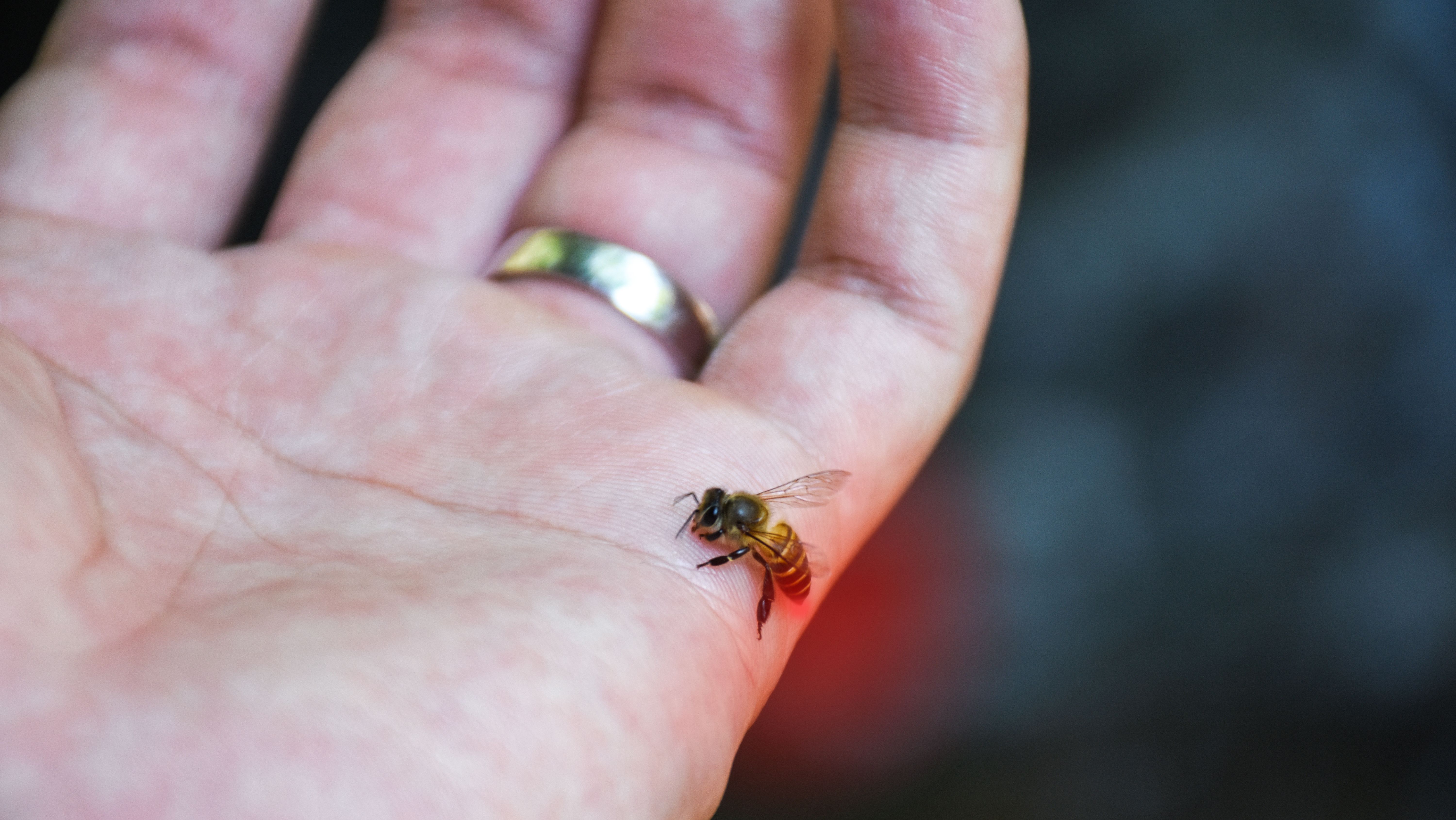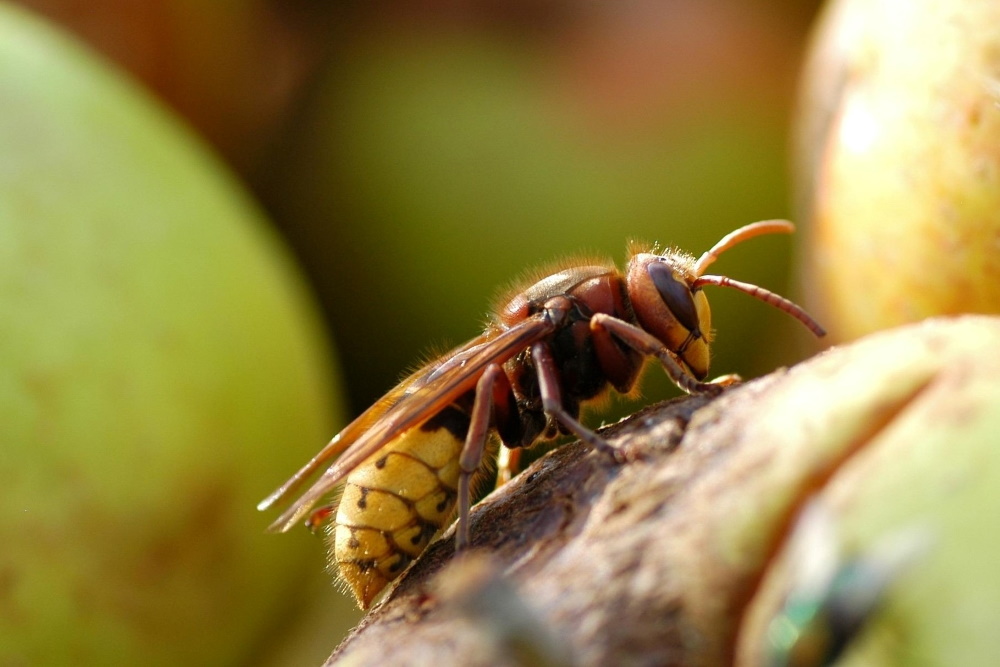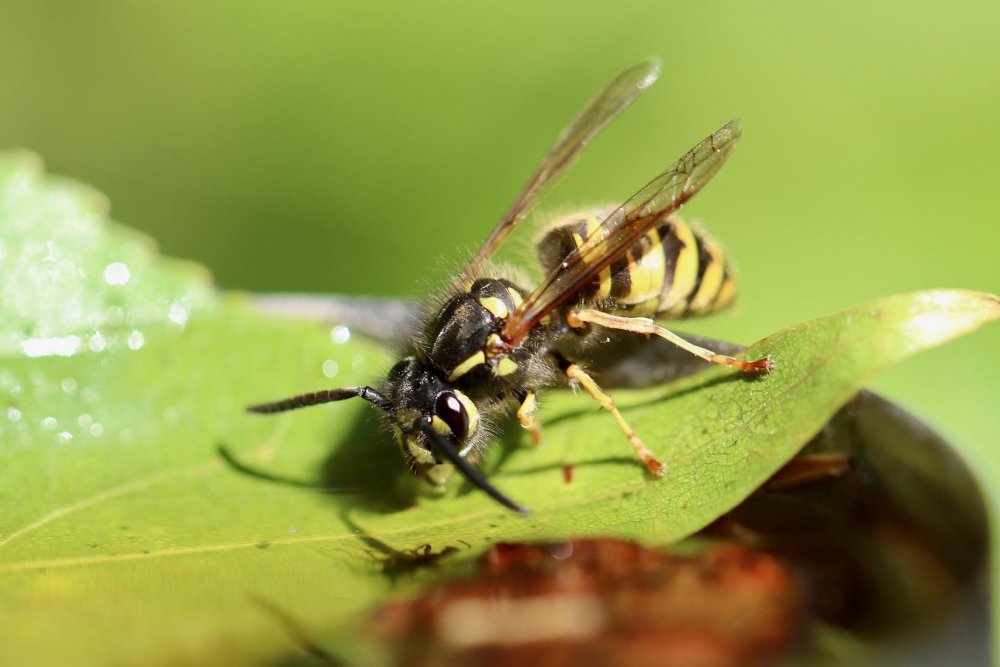Almost all of us have been stung by a bee, a wasp, or even a hornet at some point, usually as kids, like during the summer. But not everyone knows that the poisons of these three insects are very different. A different chemical composition means different reactions to stings and different degrees of pain.
When it comes to bee stings, not all bees are created equal. Some deliver just a minor pinprick while others inflict excruciating, throbbing pain that can last for hours. But which bee sting reigns supreme as the worst of them all?
As an avid outdoorsman and bee sting connoisseur, I’ve had the misfortune of being stung by my fair share of bees over the years. Through firsthand experience and extensive research I’ve come to learn that the worst bee stings come from three heavy hitters
The Bullet Ant
The bullet ant, found in Central and South America, delivers a sting with a pain that victims liken to being shot by a bullet. Indigenous tribes actually use bullet ant stings as part of coming-of-age rituals for young men to prove their masculinity and tolerance to pain.
The sting itself causes swelling and intense pain that comes in debilitating waves that last up to 24 hours. Entomologist Justin Schmidt, who created the Schmidt Sting Pain Index, gave the bullet ant the highest rating of 4 out of 4. He described the sting as “pure, intense, brilliant pain” and “like walking over flaming charcoal with a 3-inch nail in your heel.” Ouch!
The Warrior Wasp
Next up is the warrior wasp, located in Central and South America. This large wasp earned its fierce name from its defensive behavior of beating its wings loudly to mimic an army on the march when its nest is disturbed.
The warrior wasp’s enormous jaws and long stinger can inflict repeat stings that deliver potent venom. The pain is described as torturous, blinding, and shockingly electric. Multiple stings often require medical treatment. Schmidt also rated this wasp sting a 4 out of 4 on his index.
The Tarantula Hawk
Found in the Americas, the tarantula hawk is a spider wasp that hunts tarantulas as food for its larvae. Its sting produces immediate, searing pain and is among the most painful insect stings in the world.
Schmidt described the tarantula hawk sting as “blinding, fierce, shockingly electric. A running hairdryer has just been dropped into your bubble bath.” He gave it his maximum pain rating of 4. The intense pain typically lasts no more than 5 minutes, but is an experience you’re not likely to forget!
What Makes These Stings So Painful?
The extreme pain of stings from bees like the bullet ant, warrior wasp, and tarantula hawk come from two key factors:
-
Venom composition – Their venoms contain high concentrations of potent neurotoxins that are especially effective at triggering pain neurons.
-
Stinger size – They have very large stingers that can penetrate deeply and deliver bigger doses of venom. A tarantula hawk’s stinger is as long as its entire body!
Tips to Avoid the Worst Bee Stings
While most bees only sting when provoked, here are some tips to steer clear of the worst offenders out there:
-
Be vigilant when hiking through areas where bullet ants, warrior wasps, and tarantula hawks are found.
-
Avoid disturbing nests or hives – these bees become much more defensive near their homes.
-
Cover exposed skin with clothing if bee activity seems high.
-
Remain calm and move slowly if you encounter any bees to avoid startling them.
-
Carry a basic first aid kit while outdoors to treat stings. Remove the stinger as soon as possible.
-
Alert someone if you are stung and experience severe reactions like trouble breathing, major swelling, or dizziness. You may require medical treatment.
The Bottom Line
If you ask me, the bullet ant, the warrior wasp, and the tarantula hawk are in a three-way tie for delivering the worst bee stings in the insect kingdom. Between their sizable stingers, intensely potent venoms, and Schmidt’s maximum pain ratings, they are definitely bees to avoid at all costs, unless you have a masochistic streak or want to impress some tribal elders! With a little caution outdoors, we can admire these incredible insects from a safe distance and leave the agony-inducing stings to the brave entomologists documenting them.

Which sting hurts most?
1. Don’t bother the bugs; 2. Stay away from bees, wasps, and hornets; 3. Don’t go on picnics or barbecues; 4. Stay away from trash and rotting fruit; 5. Don’t use quick hand movements to scare the bugs away.
A sting of a hornet hurts more than a sting of a bee or a wasp. This statement is probably true to anyone who has ever been stung by these insects. Even stranger is the fact that a hornet’s sting is up to 50 times less dangerous than a bee’s. Nevertheless, the sting of the hornet hurts more anyway.
The hornet is much larger and the diameter and length of its sting are larger. Also, the hornet can sting someone more than once because the sting doesn’t have any hooks on it. Wasps can do the same thing, but only the females have poison that hurts.
The bee has a smaller sting that does not penetrate so deep under the skin. But that does not mean that its stings are comfortable. What it does not have in size is balanced with the latest technologies ;-).
While bee stings do contain a lot of poison, they can also be used in a good way, like to ease the pain of sore joints. Each part of the poison makes the effect stronger; this is called “synergy,” and it quickly causes swelling and allergic reactions. Also, the bee sting has hooks that allow it to get stuck in the skin and keep injecting poison from a poison pouch into the wound for awhile after the attack. Unfortunately, the bee dies soon after its sting had been torn out.
Which means that the hornet sting is more painful, but a bee sting can also be painful. However, the effects of hornet stings are often overstated. A hornet’s seven stings are enough to kill a horse, but only three can kill a person. An exception is the extreme poison of the giant tangerine hornet, which fortunately lives only in Asia.
The hornets are insect eaters and feed on other large insects such as bees. You can watch a National Geographic video on the topic. You can see there how the hornets attack a hive. Those who don’t like this sight should keep in mind that hornets are also food for other animals in the wild. Some birds or the praying mantis, considered one of the most remarkable hunters, like to eat hornets.
Some bees have also learned how to defend themselves. A group of twelve bees can cling to a hornet and heat it up to 47 ° C with the vibrations of their wings, killing the hornet.
The American biologist Justin Schmidt did a study on himself to see how painful the bites of each insect are. If you want to see a direct comparison of how painful a bee, wasp, or hornet sting is, we recommend this.
He used a scale from 1 to 4 to rate how bad the pain was. A value of 1 means the least pain, like when a bee sting barely hurts your skin. For example, a value of 4 means the stings are very strong and can give even tough people cramps. The values for hornets (of the genus Dolichovespula maculata, which is only found in North America) are about the same as those for wasps. Well, we do not know really, but it is an interesting test.
| Type | Schmidt’s Index | Description of the pain |
|---|---|---|
| Wasp | 2 | It feels like someone has extinguished a cigar on my tongue. |
| Bee | 0 – 2 | A pain as if my skin was burnt with a match. |
| Hornet | 2 | A feeling as if a door was closed on |
Can insect stings be dangerous?
• difficulties when swallowing • restricted breathing, asthmatic problems • confusion • anaphylactic shock – loss of consciousness
When you get stung is the most important thing. Bees are most active in the spring and early summer, while hornets and wasps are most active in the late summer and fall. If you are normally not allergic, a sting should not be dangerous for you. We only advise that you get medical help right away if you’ve been stung in a very sensitive area, like your tongue or neck, where you could pass out.
A common reaction to stings is increased pain in the hurt area, itching, a reddened skin and swelling. These symptoms should be gone within a period of two days to one week. An allergic reaction lasts longer than a day. The area that was stung may be very swollen, and you may also have stomach pain, hives, diarrhea, or feeling dizzy. People with allergies who have been stung by a bee, wasp, or hornet should see a doctor right away to avoid getting an electric shock.
 Hornet
Hornet
 Wasp
Wasp
If you get stung by a bee, wasp, or hornet, the poison in their stings could easily kill you. For actual poisoning of the organism, however, these are too small quantities. Up to 500 bee stings are said to be a truly lethal dose for an adult person and about 50 for a child. After such an attack, the bee stings can lead to kidney failure.
Why Bees Die After They Sting You (ouch)
FAQ
Which bee sting is most painful?
Which sting is worse, bumble bee or wasp?
What is the most harmful sting?
Which sting is worse, yellow jacket or honey bee?
What is the most painful bee sting?
Giant Bornean bee The giant Bornean bee is one of the largest bees worldwide, they also provide the most painful bee stings. Their sting is described as a sharp, electrifying, and piercing pain that can last up to 10 minutes. Luckily, these bees aren’t aggressive and will avoid stinging if they can.
What are the complications of bee sting?
Complications of a bee sting include: • Hives or severe itching • Vomiting or diarrhea • A rapid heart rate • Low blood pressure causing dizziness or fainting • Tongue or throat swelling which may cause shortness of breath These may be symptoms of anaphylaxis, a severe allergic reaction. If a person has multiple bee stings, complications can also include headache, fever, confusion, seizures or worsening of other pre-existing medical conditions.
When is a bee sting dangerous?
The decisive factor is when you get stung – the bees are most active in spring and early summer, the hornets and wasps in late summer and autumn. If you are normally not allergic, a sting should not be dangerous for you.
What is a bee sting?
A bee sting is characterized by the release of apitoxin through its stinger. Apitoxin is a venom containing protein substances that affect the immune system and skin, leading to instantaneous pain. This can cause many reactions ranging from temporary pain to a severe allergic reaction.
Does a honey bee sting hurt?
The honey bee doesn’t have the most painful sting, but it still hurts. And they’re almost all over the world. Deposit Photos This article was originally published on Field & Stream Snakes aren’t the only critters with poison potential. Insects also evolved to use venom as a weapon for warding off attackers or immobilizing prey.
Can a bee sting be poisoned?
If you have been stung by a bee, wasp or hornet, you could be easily poisoned as these stings contain venom. For actual poisoning of the organism, however, these are too small quantities. When talking about a truly lethal dose, up to 500 bee stings are mentioned in an adult human and about 50 in a child.
